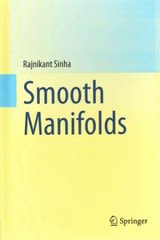Question
To assess a child between the ages of 4 and 8 for literacy skills, specifically concerning reading, speaking, and drawing/writing. An analysis of the data
To assess a child between the ages of 4 and 8 for literacy skills, specifically concerning reading, speaking, and drawing/writing. An analysis of the data collected will be included in the literacy project, which is due at the end of the semester. You will be designing a lesson based on the data collected.
For this assignment, you will be completing an informal assessment (see textbook Cooper, J.D., Robinson, M.D., Slansky, J.A., & Kiger, N.D. (2018). Literacy: Helping students construct meaning. Cengage. ISBN: 978-1-305- 96060-2 Additional readings are provided in Canvas p. 60/ Section 3-1) involving an observation (see textbook pp. 67-68/ Section 3-5) followed by a retelling (pp. 70-73/ Section 3-5d). There is the option to create a checklist (pp. 69-70/ Section 3-5b). Use supportive elements from the textbook and other content from this class. Use the videos & material from Module 11, Story Book Reading Assessment Assignment.
To Collect Data:
- Typically you will always acquire consent from a parent/caregiver before conducting the observation. In this case, I have obtained consent and will present a pre-recorded video/s on a bilingual and/or multilingual child.
- This child will be between the ages of 4-8 years old. You will gather relevant information on the child and use this in the report.
- In this assessment, a developmentally appropriate book (narrative or expository) has been chosen. If the child is able to read, the child read will do a read-aloud. If the child is not a reader yet, someone will be reading the book to the child.
- WRITE informal notes on what you observed regarding the child's reading from the video observation (English & Mandarin readings). An option is to create a checklist (see textbook pp. 69-70). Note the child's comprehension and ability to speak about the narrative or expository text.
- After the reading, the child will retell (see textbook pp. 70-73/ Section 3-5) with a drawing or writing. Prompt(s) will be based on the text. Whether the retell is a drawing or writing will depend on the child's abilities. In this case, sample drawings are available here.
- After the drawing/writing retell, the child will verbally explain their response/retell. WRITE notes on this retell portion of the observation as well.
For the Write-Up & Submission-Provide a write-up with the criteria below. You may use headers to organize the sections.
- Setting/Participant: Describe the setting and participant (e.g. age, gender, any characteristics that may influence their literacy development). Provide a thoroughness of relevant data.
- Reading: List the title and author of the text selected. Describe the child's reading skills with support from what you have learned from this course. If you cite, use proper APA 7 style/format referencing.
- Retell: Describe the child's retell (drawing/writing) .This child did not express what the story was about but was able to draw the front cover of the Pete the Cat book. When describing, reference chapter 9 of the textbook on writing, specifically pp. 335-338, Section 9-4. Determine what phase of writing the child demonstrated (e.g. picture-writing to conventional). (Minimal 1 thorough and thoughtful paragraph.)
- Pre-Analysis: Summarize thoughts on child's literacy skills considering reading, speaking, and drawing/writing from the videos. Use your knowledge of literacy skills through lectures, videos, readings, textbooks, etc. (Minimal 1 thorough and thoughtful paragraph.)
- Reflection: Reflect on this observation on both the child and the observation itself. What were strengths? What were limitations? What did you notice during the reading, of yourself or from your participant? What kinds of scaffolding did you assist with? Explain. Add any other thoughts on this reading process. (1-2 thorough and thoughtful paragraph.) I am looking to see that you've made connections from lectures, videos, readings, strategies, etc. If you use other sources as support, make sure you are citing and giving credit to someone else's article/words/work.
Step by Step Solution
There are 3 Steps involved in it
Step: 1

Get Instant Access to Expert-Tailored Solutions
See step-by-step solutions with expert insights and AI powered tools for academic success
Step: 2

Step: 3

Ace Your Homework with AI
Get the answers you need in no time with our AI-driven, step-by-step assistance
Get Started


